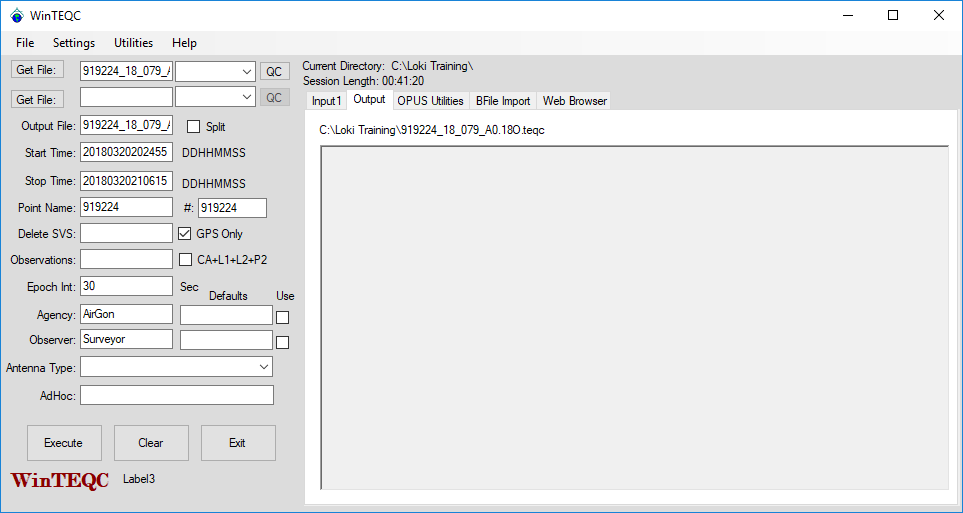Problem:
User receives a “Request Entity Too Large” error from OPUS. It typically means your Rinex observation file is too large for OPUS to accept and the file size needs to be reduced
Probable Resolution #1:
Reduce the Rinex file size by removing information from the Rinex file that OPUS automatically removes, or does not use. OPUS decimates every submission to 30 second intervals, so decimating your Rinex will reduce file size without removing useful information. OPUS also only uses GPS satellites, so removing other satellites from the file will also reduce the size. The following steps outline the process for removing all satellites except GPS, and decimating your Rinex observation file to 30 seconds.
- Open WinTEQC. Download here if not installed: http://teqc.silkwerks.com/
- Click “Get File” and navigate to the Rinex observation file.
- Check the box next to “GPS Only”.
- Enter 30 in the “Epoch Int” field.
- Click “Execute”.
- If no errors are visible in the “TEQC error” box, the file was edited successfully.
- In the same folder as the original Rinex file, an edited Rinex observation file will be created with “.teqc” appended to the end.
- Remove “.teqc” from the end of the edited Rinex file and submit the smaller observation to OPUS.
- NOTE: This file is edited specifically for OPUS and should not be used in ASPSuite.


Anyone getting this error and know what it’s referring to?
Unhandled exception has occured in your application. If you click Continue, the application will ignore this error and attempt to continue. If you click Quit, the application will close immediately.
After clicking Continue the rinex does not execute it’s process.